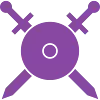If you see this message, it means that your browser failed to load this file.
You should try the following : check your connection, disable ad-blocker, clear your browser cache, try in private mode, try from another browser/computer/connection.
Spiele Die Arena von Tash-Kalar und 1045 andere Spiele online.
Kein Download notwendig, spiele direkt im Webbrowser.
Mit deinen Freunden und tausenden Spielern aus der ganzen Welt.
Kostenlos.
Letztes Update
Dear players, a new arena season has started and some options changed for Tash-Kalar:
| Previous season | New season |
|---|
| Etherweave | On | Off |
Mehr anzeigen

Fordere
die besten Spieler der Welt heraus
Werde der nächste Meister von
Die Arena von Tash-Kalar
Spielinformationen
Autor
Grafiker(in)
Herausgeber
Jahr
Entwickelt von
Anzahl gespielter Spiele
Anzahl der Spieler
Spieldauer
Komplexität
Strategie
Glück
Interaktion
Verfügbar seit
Version
Die Arena von Tash-Kalar Im Internet
العربية
беларуская мова
български език
Brezhoneg
Català
čeština
Dansk
Deutsch
Ελληνικά
English
Español
Eesti keel
فارسی
Suomi
Français
Galego
עברית
Hrvatski
Magyar
Italiano
Bahasa Indonesia
日本語
한국어
Lietuvių
Latviešu
Bahasa Malaysia
Nederlands
Norsk
Polski
Português
Română
Русский язык
Slovenčina
Slovenščina
Српски
Svenska
ไทย
Türkçe
Українська мова
Tiếng Việt
中文 (漢)
中文 (汉)



